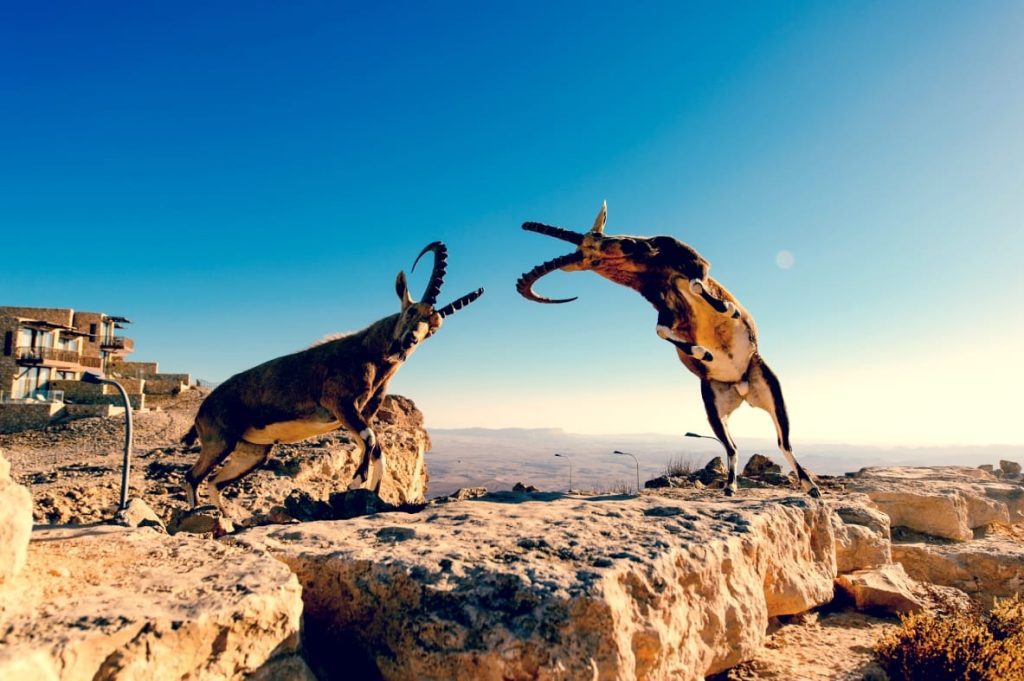The Nubian ibex (Capra nubiana) is a desert-dwelling goat species found in mountainous areas like the Judaean Desert and the Negev. The wild population is estimated at 1,200 individuals. Nubian ibexes stand around 65–75 cm (2.1–2.6 ft) tall at the shoulder and weigh around 50 kg (110 lb). They are a light tan color, with a white underbelly; males also have a dark brown stripe down their backs. Nubian ibexes have long, thin horns that extend up and then backward and down. In males, these reach around 1 m in length, while in females they are much smaller.

“The high mountains belong to the wild goats; the crags are a refuge for the hyrax.”
Psalm 104:18
In Israel, the historically dense ibex population, described in the Bible (Psalm 104:18), was decimated in the wake of the First World War when the sudden availability of rifles enabled Bedouin to hunt them to near extinction. After the establishment of the state, when hunting was outlawed and nature reserves were created in which they were protected, the Nubian ibex population rebounded. Three ibex populations have been discovered in Israel: in the Judean Desert, the Negev mountains, and Eilat.

“So Saul took three thousand able young men from all Israel and set out to look for David and his men near the Crags of the Wild Goats.”
1 Samuel 24:3
Nubian Ibex Ecology
Nubian ibexes live in rough, dry, mountainous terrain; where they eat mainly grasses and leaves and are preyed upon by leopards; wolves; common foxes, eagles, and bearded vultures. In addition, they are social and herds tend to consist of females, young, and males up to the age of about three years. Furthermore, the males are solitary or form more transitory bands of up to eight individuals. During the breeding season, males join the female-based herds for the six- to eight-week rut. Large males then do battle with much clashing of horns. (see video below)